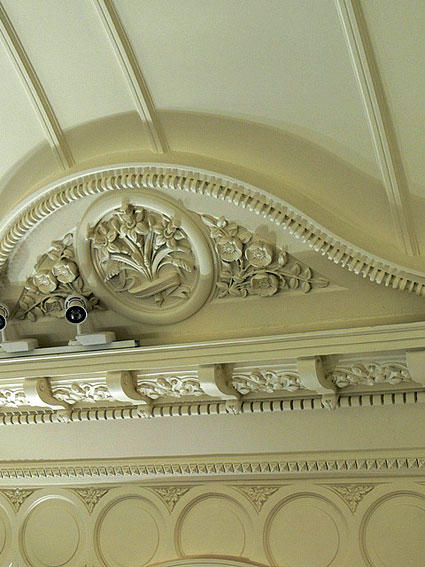Chapel of Christ the King
Toorak
B 1929 Hill, Norman & Beard (o/n 11);
addtn (Principal 4) 1945-1946 Hill, Norman & Beard (o/n V184).
2m, 10spst, 7c, tubpn.
Gt: 8.8.8.4. Sw: 8.8.8.8. Ped: 16.8.


The Loreto Sisters established the school Mandeville Hall on the present site in 1924. It is located in the grounds of the neo-classical mansion built for Joseph Clarke in 1887-89 and designed by architect Charles Webb; this incorporates parts of a previous house on the site ‘St George’s, later ‘Athelstane’. The interiors were elaborately decorated by the London firm of Gillow & Company. The mansion and its decorative features have been well preserved.
The foundation stone of the Chapel was laid on 25 September 1927 by Archbishop Daniel Mannix. It was constructed in a neo-classical idiom to blend with the mansion, to which it is attached to the left, and incorporates elaborately detailed plaster work in the barrel vault and fine stained glass windows by John Hardman & Sons, Birmingham. The architect was Robert Harper, with A.A. Fritsch responsible for many Catholic churches in Melbourne during the interwar years. The building has very recently been restored and the carpet removed, providing an excellent acoustic for liturgy and music.
Classified by the National Trust of Australia (Victoria), the organ was built in 1928 by Hill, Norman & Beard in the firm’s London factory at York Road at a cost of £1059. It bears the firm’s English job number 2712 (marked on the middle G# pipe of the Swell Violin Diapason) but is also recorded as the firm’s Australian order number 11.
The instrument remains almost entirely intact apart from the substitution of a Principal 4 foot on the Great Organ for the original Wald Flute 4 foot by Hill, Norman & Beard (Australia) Pty Ltd in 1945-46 (order number V184). It retains its exhaust tubular pneumatic action and elegant attached drawstop console, with ivory fittings, placed on the right hand side of the organ in its small rear gallery.
The Swell Organ is placed at right angles in the left corner of the gallery and entrance to the interior of the instrument is through a swinging panel containing pipes: the entire façade consists of non-speaking zinc pipes. The stopped metal trebles of the flutes have turned wooden stoppers while the treble pipes of the Oboe have circular holes placed at the top of the resonators and conical harmonic pipes in the extreme trebles, in the style of Norman & Beard.
The organ has recently been cleaned by Australian Pipe Organs Pty Ltd and is in excellent condition.
GREAT |
8 8 8 [4] 8 8 8 8 16 8 |
1945-46 A A |
Compass: 61/30
2 fixed pneumatic thumb pistons to Great
2 fixed pneumatic thumb pistons to Swell
Great to Pedal reversible composition pedal
Balanced swell pedal
Duplex blower
Tubular-pneumatic key and stop action
Mechanical manual to pedal couplers
Small Organs for Convents and Schools (Hill, Norman & Beard Ltd, c.1929)
Loreto Mandeville Hall website
National Trust of Australia (Victoria) register
Hill, Norman & Beard lists of English and Australia orders
There is a second pipe organ at Mandeville Hall. Built in the 1970s by George Fincham & Sons Pty Ltd, this was installed at Loreto House, 75 St Vincent’s Place, Albert Park, and has recently been moved (2008) to the school following the sale of the Albert Park property. It has a single manual, four stops 8, 4, 2, 1-1/3 and mechanical key and stop action.
 |
 |
|

|
||
 |
 |
|

|
||

|
||

|
||
 |
 |
|
 |
 |
|
 |
 |
|
 |
Fincham Positive organ
|
|



Photos: JRM (Oct 2008)
John Maidment
14 October 2008